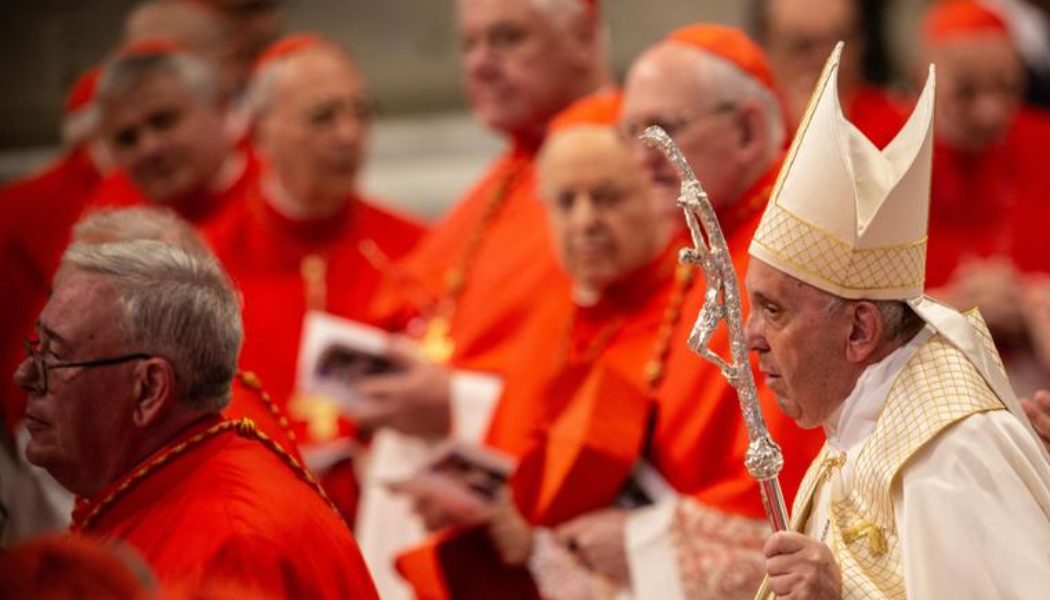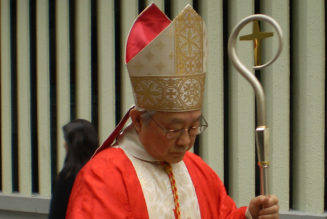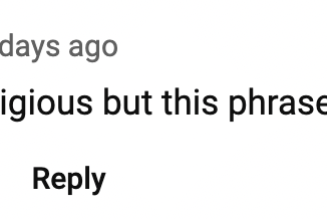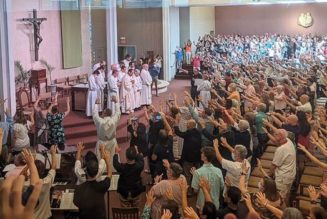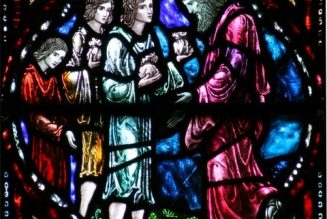
The next consistory for the creation of new cardinals has the typical flourishes of Pope Francis. The Holy Father chose three nuncios, reflecting the high priority he gives to the diplomatic establishment, elevated an auxiliary bishop, rewarded the return of Italian control in the Holy Land, comforted a bishop challenged by his people, promoted the traditional Curial officials, and passed over various prominent dioceses.
Here are eight takeaways from the Holy Father’s choice of new cardinals.
No Hat for Nicaragua’s John Fisher
When King Henry VIII, well into his tyrannical phase, locked the learned and holy Bishop John Fisher of Rochester into the Tower of London, the pope of the time, Paul III, was deeply grieved. He named Fisher a cardinal in May 1535, hoping thereby to ameliorate his treatment. Henry was enraged and said that there was no need to send the red hat to London; he would send the head to Rome instead. He tried Fisher on June 17, 1535, and beheaded him five days later.
Bishop Rolando Álvarez of Matagalpa, Nicaragua, has been imprisoned in Managua’s most notorious jail, the Ortega regime’s version of the Tower. He has been “convicted” of treason and sentenced to 26 years in prison. He was offered exile in the United States, but refused to leave the country without first meeting his brother bishops and priests.
A red hat for Bishop Álvarez would have been the most dramatic creation of a cardinal since that of Cardinal Fisher himself and a dramatic demonstration of the Holy Father’s solidarity with persecuted Christians worldwide. Would it have provoked worse treatment for Bishop Álvarez, as it did for St. John Fisher? Perhaps, which may be why Pope Francis didn’t do it.
The Holy Father did have another option, to announce that he would create a cardinal in pectore, meaning that the name is kept secret, or “in (the pope’s) heart.” St. John Paul II did it three times, including with the persecuted bishop of Shanghai, Cardinal Ignatius Kung Pin-Mei. An in pectore appointment would not have put Bishop Álvarez in the direct line of fire, but many people would have suspected he was the secret cardinal and been comforted by that.
Archbishop Shevchuk Snubbed, Again
Painfully, after 18 months of professing his closeness to the “martyred” Ukrainian people, Pope Francis passed over for the second time during the war the head of the Ukrainian Catholic Church, Archbishop Sviatoslav Shevchuk. Pope Francis, unlike dozens of world leaders, has not visited Kyiv, and has now declined for the second time even to send the red hat there as a sign of wartime solidarity, as Pope St. John Paul II did in 1994 with the archbishop of Sarajevo. Given that the head of the Ukrainian Catholics — the largest of the Eastern Churches in communion with Rome — is usually a cardinal will make the passing over of Patriarch Sviatoslav for the ninth consecutive consistory particularly painful in Kyiv and the global Ukrainian diaspora. On the other hand, the exclusion of Archbishop Shevchuk will be noted and welcomed in the Kremlin.
Securing the Legacy
This consistory, coming quick on the heels of the appointment of Archbishop Victor Fernández as new prefect of the Dicastery for the Doctrine of the Faith, was described by veteran Vatican commentators “as more part of Pope Francis’ legacy than any of the other nine consistories the Pope has held during his pontificate” and the “consistory of a Pope in a hurry.” Indeed, the consistory was not strictly necessary, as the number of electors is more or less at 120, the nominal limit set out by St. Paul VI. (Both John Paul II and Francis went over the limit from time to time.)
Archbishop Fernández was named a cardinal, as is customary, as were two other prefects of Roman dicasteries. That was to be expected. There were, though, some surprises, also customary under Pope Francis.
Love for Nuncios
Pope Francis has a special love for nuncios, which is counterintuitive because, more than any other caste of clergy, their identity is that of the chief shepherd’s agents, rather than smelling of the sheep. They rise through an ecclesiastical bureaucracy and are trained in the curial arts. Early on, the Holy Father signaled the priority he would give to diplomats, when he named as prefect of the Congregation for the Clergy the head of the diplomatic academy in Rome, Cardinal Beniamino Stella. The prelate ultimately responsible for priestly formation would be one expert in training diplomats.
Pope Francis put three nuncios on his list: Archbishop Christophe Pierre, nuncio to the United States, Archbishop Emil Paul Tscherrig, nuncio to Italy, and Archbishop Agostino Marchetto, already retired. In 2016, when Holy Father wished to show his solidarity with the suffering Syrian people, he did not choose a Syrian bishop to be made a cardinal, but rather the Italian nuncio in Damascus, Mario Zenari.
Italian in the Holy Land
The Latin Patriarch of Jerusalem is a most unusual post. While the bishop of Latin Catholics in Israel, Palestine, Jordan and Cyprus, he has usually been an Italian prelate. Despite Jerusalem’s status as the Mother Church of Christianity, Catholics in Jerusalem are a minority amid the majority of Orthodox Christians.
For complicated reasons, the patriarch has not been made a cardinal in hundreds of years. When the first native patriarch, the Palestinian Michel Sabbah, was appointed in 1987, there were constant pleas that he be made a cardinal. He wasn’t, and neither was his successor, Fouad Twal of Jordan. In 2016, Pope Francis returned the patriarchate to Italian hands in Archbishop Pierbattista Pizzaballa, the former head of the Franciscan “Custody” in the Holy Land. Patriarch Pizzaballa is now named a cardinal.
Comfort for the Embattled
In 2022, Pope Francis made Bishop Peter Okpaleke of Ekwulobia, Nigeria, a cardinal. This was something of a consolation prize for Cardinal Okpaleke, who had been chased out of his former diocese by the people there, led by many of the priests, who would not accept him, as he was of a different tribe. This time around, it is the archbishop of Juba, South Sudan. Archbishop Stephen Ameyu Martin Mulla also faced significant opposition on his appointment but was able to overcome it.
A Double Portion of Purple
While Montreal, Milan, Los Angeles and other traditional cardinalatial sees were passed over, as is the new norm under Pope Francis, Lisbon now has two cardinals. Not one retired and one active, as occasionally happens, but the patriarch-archbishop and his auxiliary. Bishop Américo Manuel Alves Aguiar is the second auxiliary bishop that the Holy Father has made a cardinal (the other was in San Salvador in 2017). This time, it seems a genuine novelty, two cardinals serving in the same diocese. Pope Francis will meet them both when he travels to Lisbon for World Youth Day in August, where his new cardinal is the chief organizer.
In Honor of Exile to the Confessional
Pope Francis added two personal touches to his list of cardinals. He appointed his fellow Jesuit Archbishop Angel Rossi of Cordoba, Argentina. After his divisive term as Jesuit provincial in Argentina during the 1970s, and his term as rector of the Jesuit seminary in Buenos Aires in the 1980s, the Jesuit leadership decided it would be best if Father Jorge Bergoglio simply went away. They sent him into exile in Cordoba, with a ministry restricted to hearing confessions. Naming the Jesuit archbishop of that city a cardinal is something of a reconciliation with the Jesuit rivalries of the Holy Father’s past.
It was in Cordoba that Father Bergoglio developed his deep devotion to the sacrament of confession — building upon a decisive experience in confession as a young man that opened him to a priestly vocation. Hence the elevation of Father Luis Pascual Dri, confessor at the Shrine of Our Lady of Pompeii in Buenos Aires. The 96-year-old retired Capuchin spends nearly all of his time hearing confessions, and Pope Francis has often held him up as a model for confessors.
This commentary was updated after posting.
